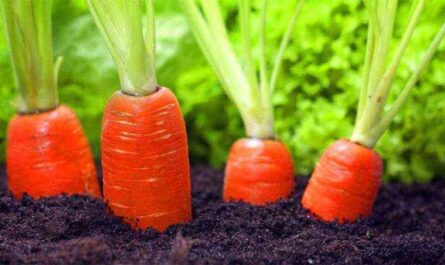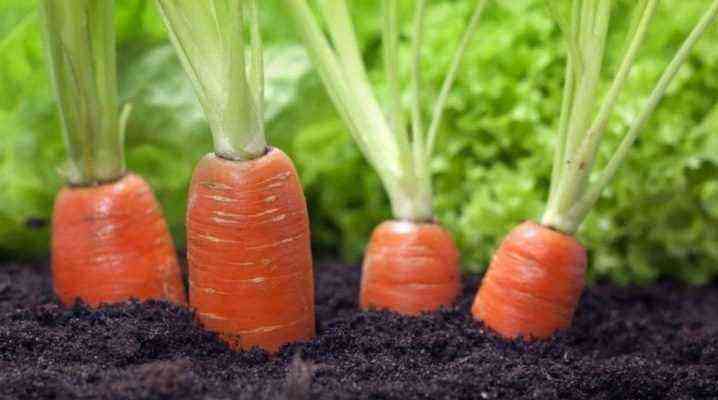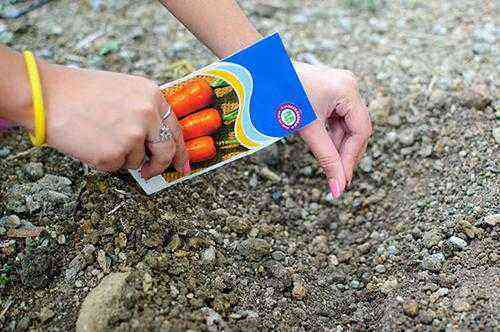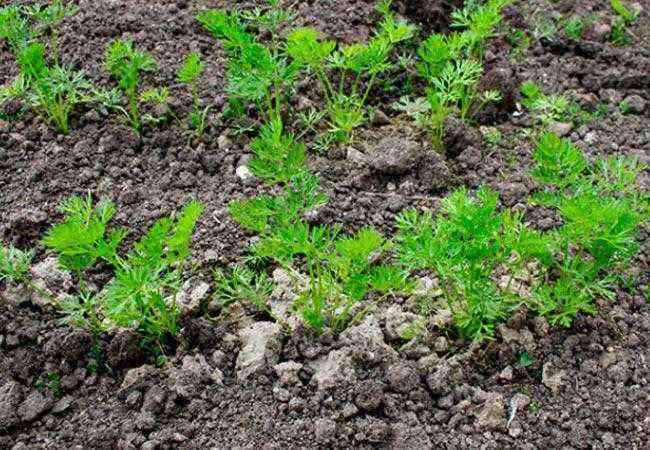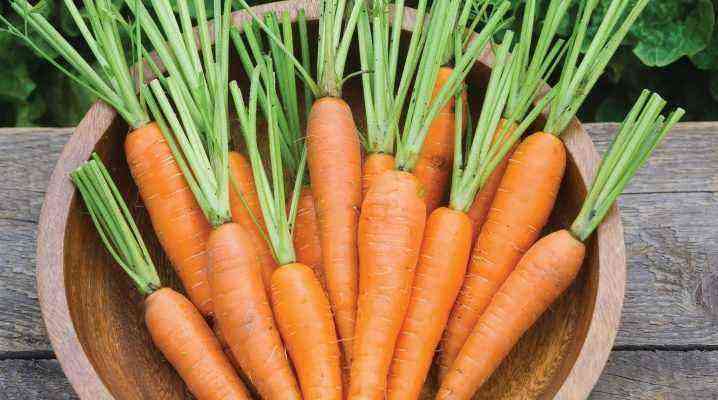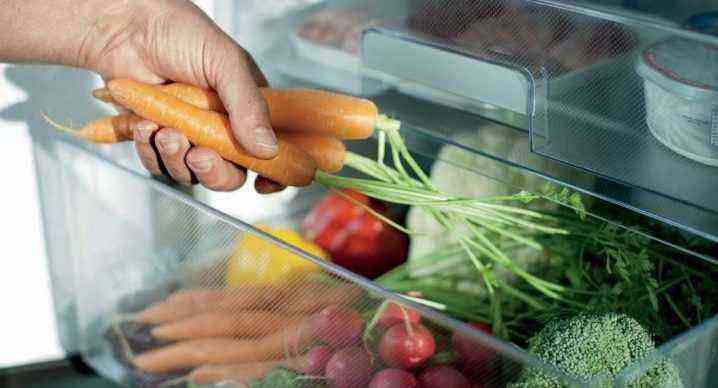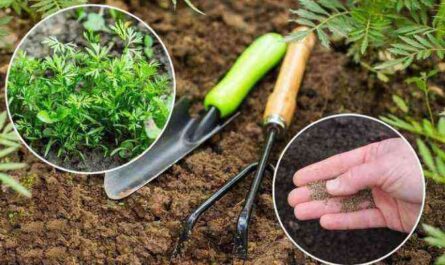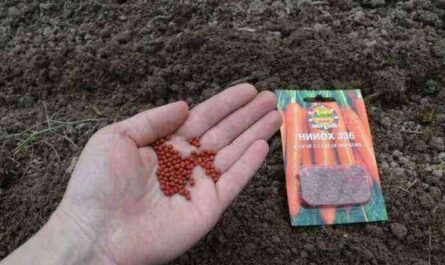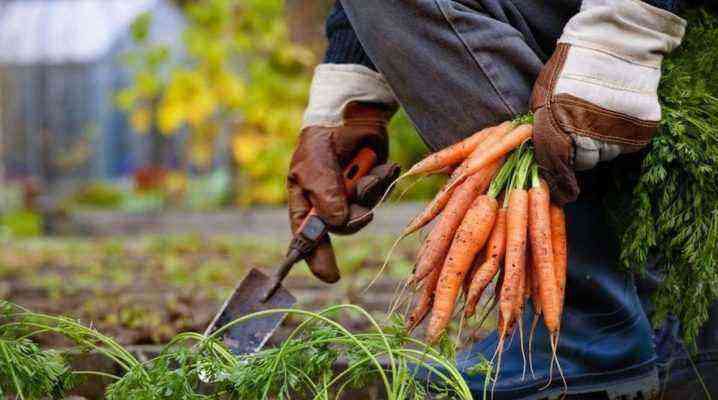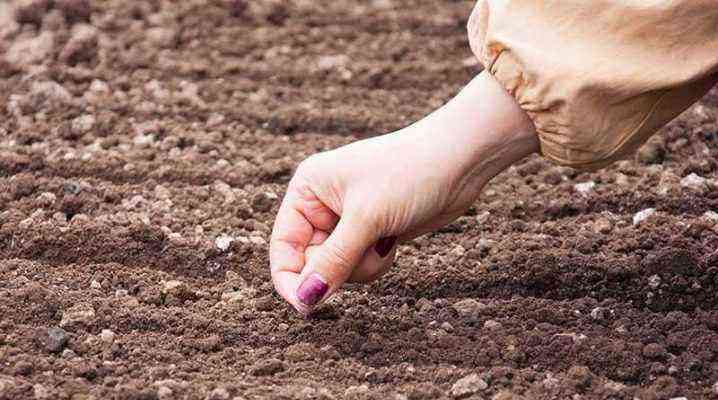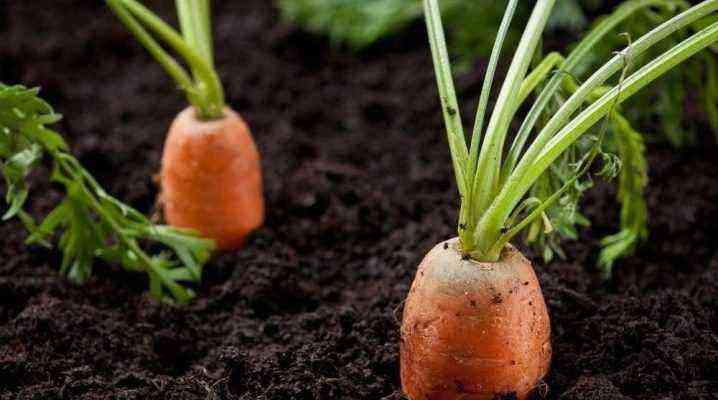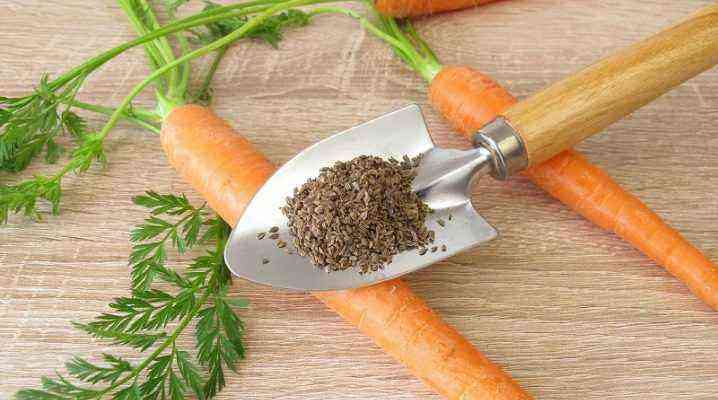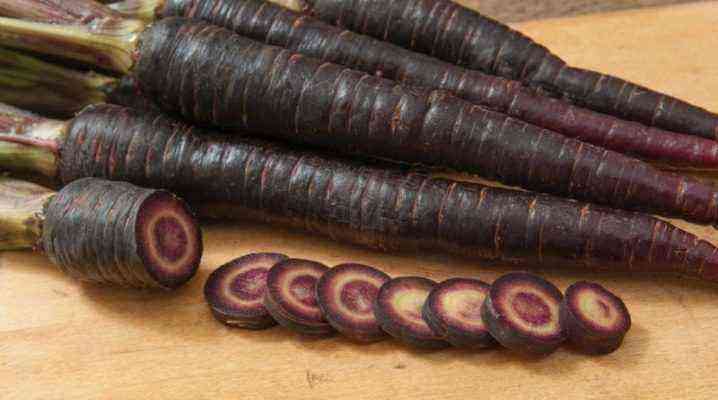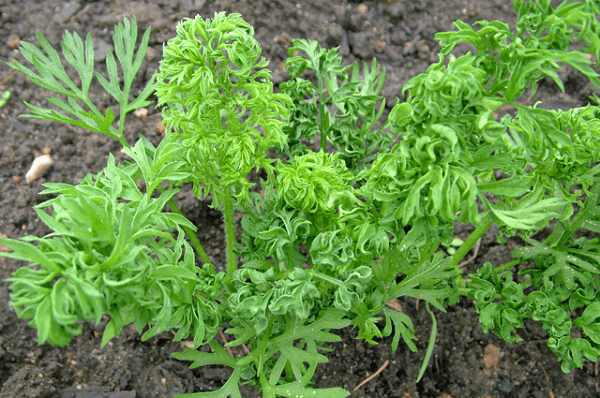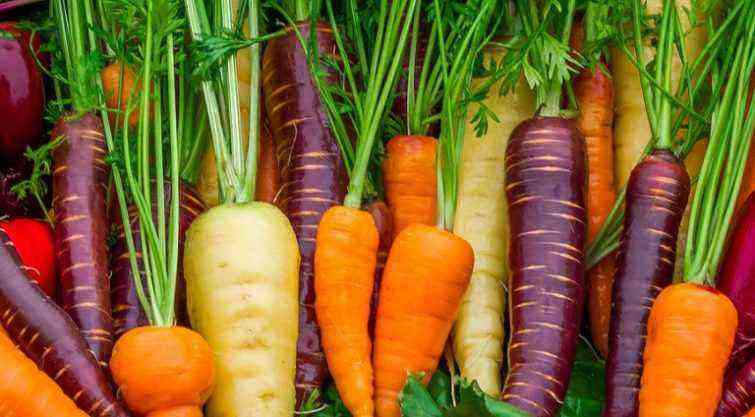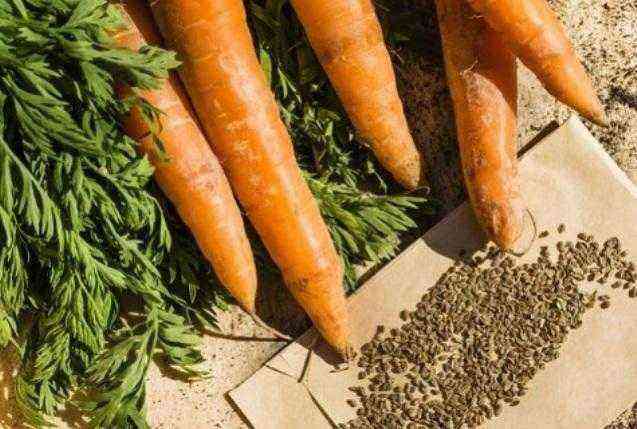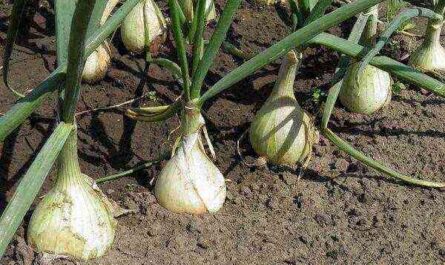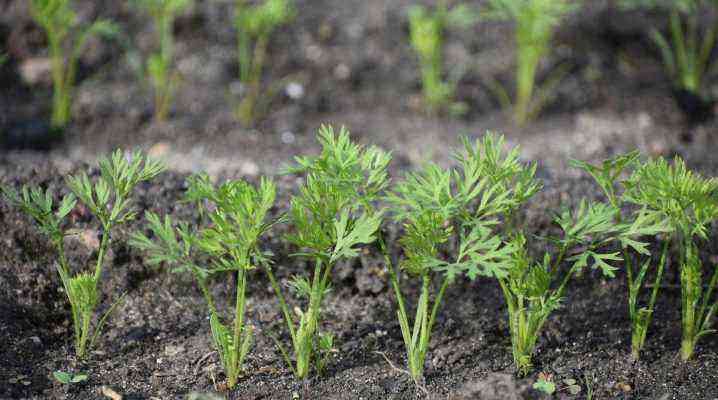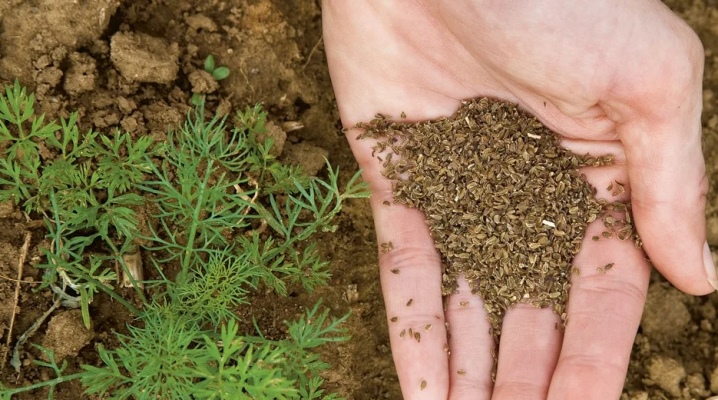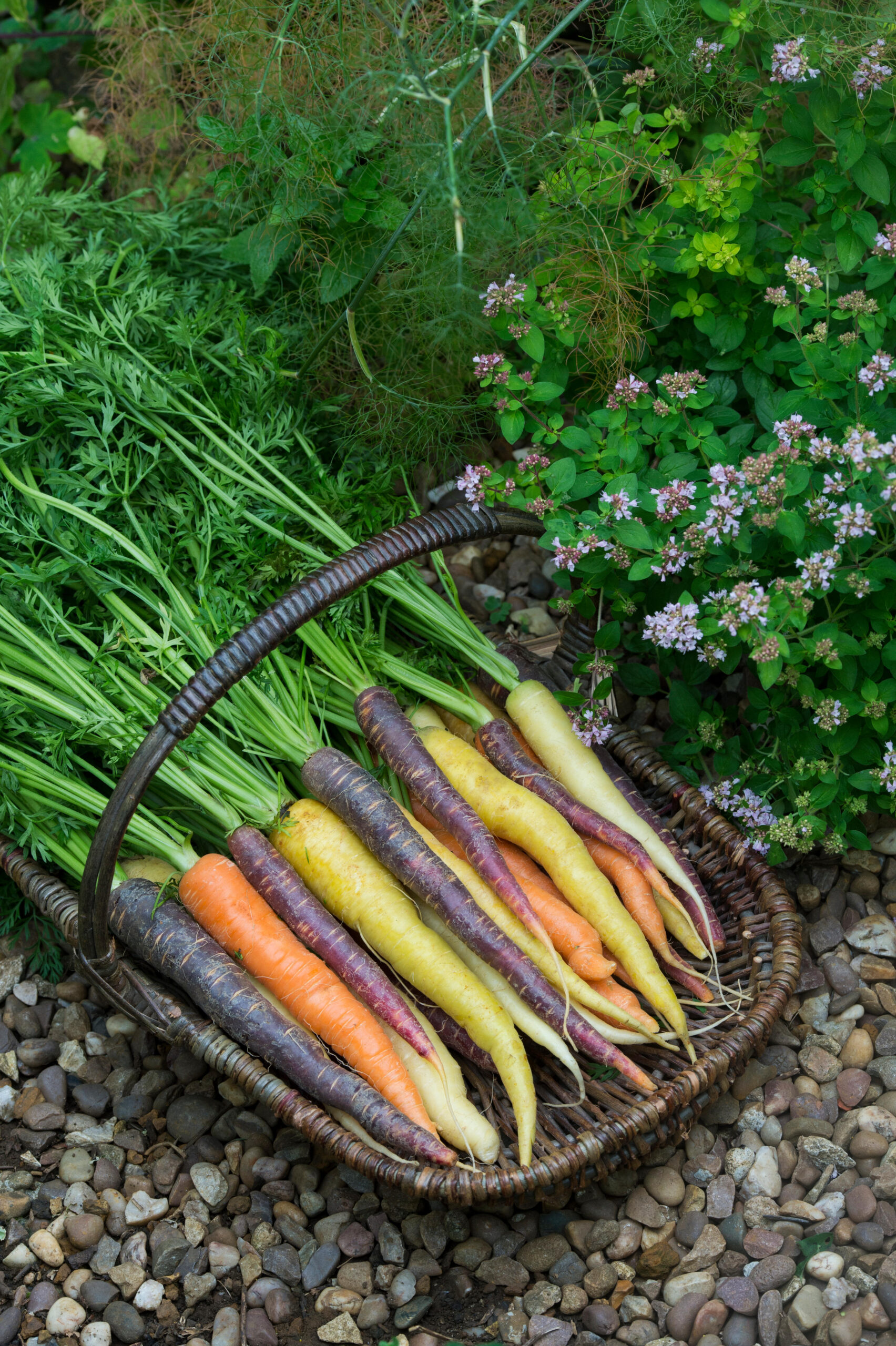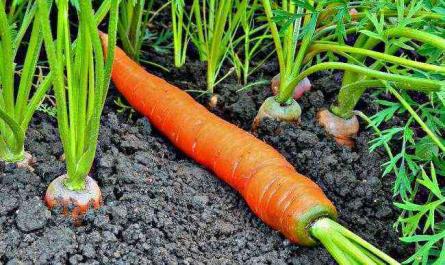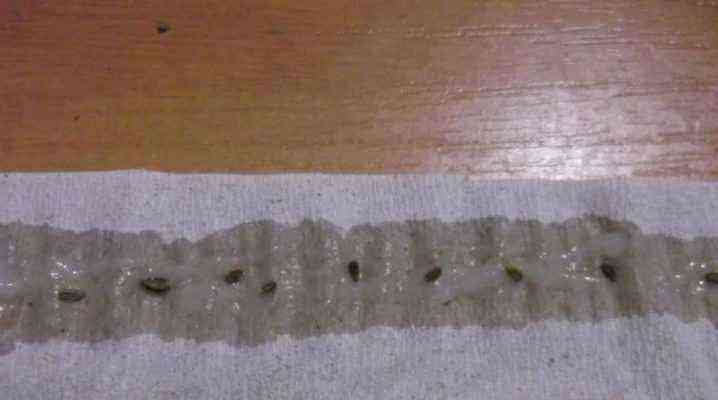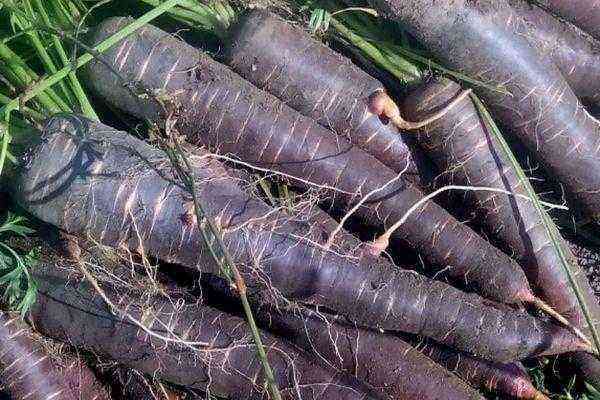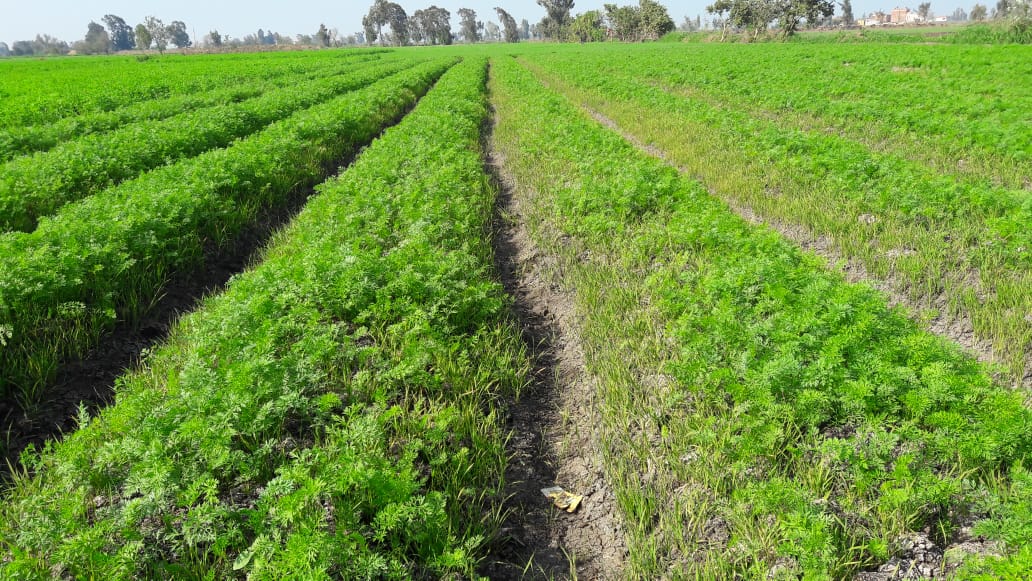
Written by: Dr.Ehab Awadallah Carrots are from Winter vegetable crops And it suits a moderate atmosphere tends to cold. Its thermal needs vary according to the stage of growth. Carrot plants are suitable for relatively high temperatures in the early stages of their growth until strong vegetative growth is formed, followed by a relatively low temperature until harvest to encourage the formation of good root growth.
The optimum temperature for the germination of carrot seeds is 27 degrees Celsius, while the appropriate temperature range for germination ranges (7 – 29) degrees Celsius, and the seeds do not germinate at a temperature below 4 degrees Celsius or higher than 35 degrees Celsius. In the stage of vegetative growth, it needs a high temperature of 29 degrees to form large and strong vegetative growth, and with the progression of the intentions in age, its thermal needs decrease to 0-2 degrees, in order to encourage the transfer of carbohydrates from the leaves to the roots.
The large difference in temperature affects the size, shape, color, and percentage of sugars and fibers in the resulting roots. High temperature leads to the formation of short, thick, woody and light roots, and the roots are thin, long, poor in color and low in sugar content at low temperatures. An unacceptable bitter taste is formed at temperatures above 27 ° C. Also, the percentage of fiber in the roots increases when the temperature rises during ripening.
Varieties also differ among themselves in terms of their tolerance to low temperatures, as the plants of the municipal variety prepare for flowering faster than foreign varieties. In terms of lighting, light has no effect on that.
Plants need a long day at the beginning of their life to form a strong vegetative system, and a short day to form a large root system. The photoperiod affects the color of the roots, so the color is poor when the photoperiod is 7 hours, and the color improves by increasing the lighting period to 9 hours.
suitable soil
The cultivation of carrots is best in light yellow lands with good drainage and ventilation, rich in nutrients and free of weeds And with an acidity number of 5,5 – 6,5. Light soil helps smooth roots to grow well. On the other hand, heavy soil limits the length of the roots, and the vegetative growth is abundant, and the roots are branched and short conical. Obstacles in the soil such as stones lead to the formation of roots of abnormal shapes. Carrot plants are sensitive to salinity, which negatively affects seed germination, yield and quality.
planting date
Municipal carrots are planted during the period from mid-August until early October. Delaying planting leads to preparing the plants for flowering, and their tendency towards flowering as soon as the temperature rises. As for foreign varieties, they can be planted from mid-August with Baladi carrots until February; This is because the cold prevailing in Egypt during the winter is not enough to prepare it for flowering. It can continue to be planted until March in coastal areas, but its yield is low.
agricultural cycle
Carrots should not be planted repeatedly on the same plot of land. The interval between two carrot plantings in the same plot should be at least three years.
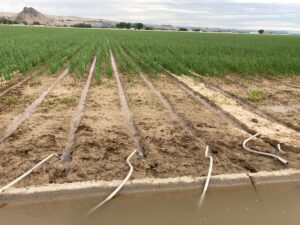
seed quantity
It is propagated by seed sown directly in the permanent field. The quantity of seeds needed for planting an acre of the municipal variety is 5 kg due to the small size of the roots and high density cultivation, while in foreign varieties the quantity of seeds ranges from 3-2 kg. In general, the amount of seeds increases when planting in hot weather, and decreases in appropriate lugs, ie, moderately cold weather.
It is noted that the density level allows strengthening or mitigating some of the properties of the roots, for example, the earlyness decreases and the root size shrinks whenever the density is high, while the weak density helps early and limits competition for light. Thus, the density must be chosen according to the goal for which the final product is directed, taking into account the possible conditions, the type of soil and the variety.
foreign items
The obvious difference between the hybrid varieties and the old communal varieties can be noted in terms of advantages. In addition to their hardness, and their ability to withstand large fluctuations in temperature levels, the hybrid varieties give great homogeneity on the level of size, better coloration of the roots, and good resistance to longitudinal cleavage. Among the foreign brands registered in Egypt are: Kuroda ks – Bangor F1 – Sigma F1 – Kuroda Mohsen – Shenzhen – Nanco F1 – New Kuroda – Vivacruda – Nantes.
Preparing the land for farming
It is necessary to serve the land well before planting, because the root seeds are slow to germinate and its seedlings are weak in the principle of its life, so it is sensitive to any presence of weeds at the beginning of planting. Therefore, care must be taken to develop and implement a program to eliminate them before planting. It can be resorted to turning the ground first to enable the weed seeds to germinate to be eliminated before planting. And you should not hesitate to repeat the process whenever necessary. can also be used pesticides herbs.
farming methods
Carrots are grown in the following ways:
First – In the old lands: the seeds are planted in basins of 3 x 2 m area, either in scattered or on lines 20 cm apart from each other. It can also be planted on both sides of 50-60 cm wide lines (that is, the planning is at a rate of 12-14 lines in the two reeds), especially in heavy lands. Planting is done at a depth of 1.5 cm in heavy soils, and 2 cm in light soils.
Second – In the new lands: In the case of following the sprinkler irrigation system: The planting is in lines 30 cm apart from each other, leaving a wider distance (about 60 cm) after 4 lines for the passage of workers and agricultural machinery.
In the case of following the drip irrigation system: The irrigation hoses are spread at a distance of 90-80 cm, then the seeds are planted secretly on both sides of the drip irrigation line. While in the case of making terraces with a width of 120 cm, separated by walkers with a width of 55 cm, two irrigation lines are distinguished on the back of each terrace and the seeds are planted in lines separated from each other by 25-20 cm.
The cultivation must be carried out in a homogeneous manner so that the costly process of thinning can be dispensed with.
slippers:
It should be noted that the germination of carrot seeds is never at one time, but takes place over a period of (10-15 days) and this means that the seeds that are established first are the ones that give the largest roots in size. Therefore, slipping can be carried out in crowded places about a month after planting, when the plants are 5-6 cm tall; It is reduced at a distance of 10 cm in the case of scattering cultivation and at a distance of 5 cm in the case of linear cultivation by removing smaller plants. And slippers are a very expensive process and may cause damage to plants, so it is preferable to dispense with them by planting seeds with the greatest amount of homogeneity and the right amount of seeds.
irrigation
Care must be taken to regular irrigation throughout the life of the plant, because the lack of ground moisture leads to the formation of somewhat long, poorly colored roots that are rough to the touch, solid and woody. As for the increase in the ground moisture, it leads to an increase in vegetative growth, a decrease in the yield and the formation of poor-colored roots with a decrease in its sugar content. Excessive watering also leads to the emergence of some diseases, especially leaf blight. As for heavy irrigation after a period of thirst, it leads to cracking of the roots and is irregular in shape.
fertilization
carrots from vegetable crops Stressful soil, and fertilization must be taken care of, while not exaggerating, and fertilizer additions must be divided according to the stages of growth.
Nitrogen fertilizer is necessary for vegetative and root growth, and should not be excessively used; So as not to be at the expense of the crop to increase vegetative growth, as it leads to a lack of sugar in the roots and an increase in moisture. The phosphate fertilizer is necessary for the growth of roots well and increase the proportion of sugar. Attention should also be paid to potassium fertilization to help speed the transfer of processed carbohydrates from the leaves to the roots.
In Egypt, an acre of 20 m3 of fully decomposed old municipal fertilizer is added to the feddan. Municipal compost blocks that are not decomposed constitute an obstacle to the growth of roots, which leads to branching of the roots. should be added organic fertilizer Complete decomposition before planting, with a sufficient period of about 1.5-2 months.
also added Chemical fertilizers (200 kg ammonia sulfate, 250 kg super phosphate and 100 kg potassium sulfate) in two batches, the first after four weeks of planting, and the second about three weeks later. Noting that the delay in adding Nitrogenous fertilizer It leads to abundant vegetative growth at the expense of the crop.
It is recommended to add humic acids at a rate of 2 liters per acre every 10 days. As it works on the development of the root system and preserves the nutrients in the root vicinity. As well as not neglecting the addition of microelements by spraying on the vegetative system, as well as adding amino acids.
ripening and harvest
Carrot roots ripen after 3-4 months of planting, depending on the variety, weather conditions and the purpose of cultivation. For example, it is harvested earlier in the case of fresh consumption than in the case of processing, because delaying the harvest leads to an increase in the yield as the roots increase in size in addition to an increase in their content of carotene. It is suitable for harvesting when the diameter of the carrots is at the shoulders (3 – cm).
The carrots are harvested manually or automatically. Manual harvesting is done by inserting steel pegs under the carrots and then raising them to the top, thus uprooting the plants from the soil. When this method is followed, large plants can be harvested, and small plants are left in their places until they reach the appropriate size for marketing. Harvesting may be carried out with plows, and in this case, the plow weapon should be made deep so as not to cut the roots. The carrots may also be harvested automatically, and the same machines that are used to harvest beets are used for that. The machine uproots the roots and cut urban growth. The roots are transported to trolleys traveling in the field next to the harvesting machine.
Trading
Among the most important trading operations that take place on carrots after harvest are the following:
- Sorting: This process is carried out in the field in order to get rid of the underdeveloped, branched, cut, and pest-infested roots…etc.
- Tying in bundles: This is done in the field when you want to market the roots with their thrones.
- Cutting vegetative growths: This is also done in the field when it is desired to market the roots without their crowns. In this case, no part of the vegetative growth should be left; This is because the leftover parts shrivel and rot.
- Washing with water and grading according to volume and filling: These operations are carried out at filling stations.
Storage
Carrots can be kept in the soil in good condition for less than a month. Carrot roots (without leaves) can also be stored in cold rooms in good condition for (4-5) months at zero degrees Celsius with (90-95) relative humidity. Taking care that none of the apples, pears, or any other substance that produces ethylene gas is placed with it in the cooling room, as it gives a bitter flavor to the stored carrots.
